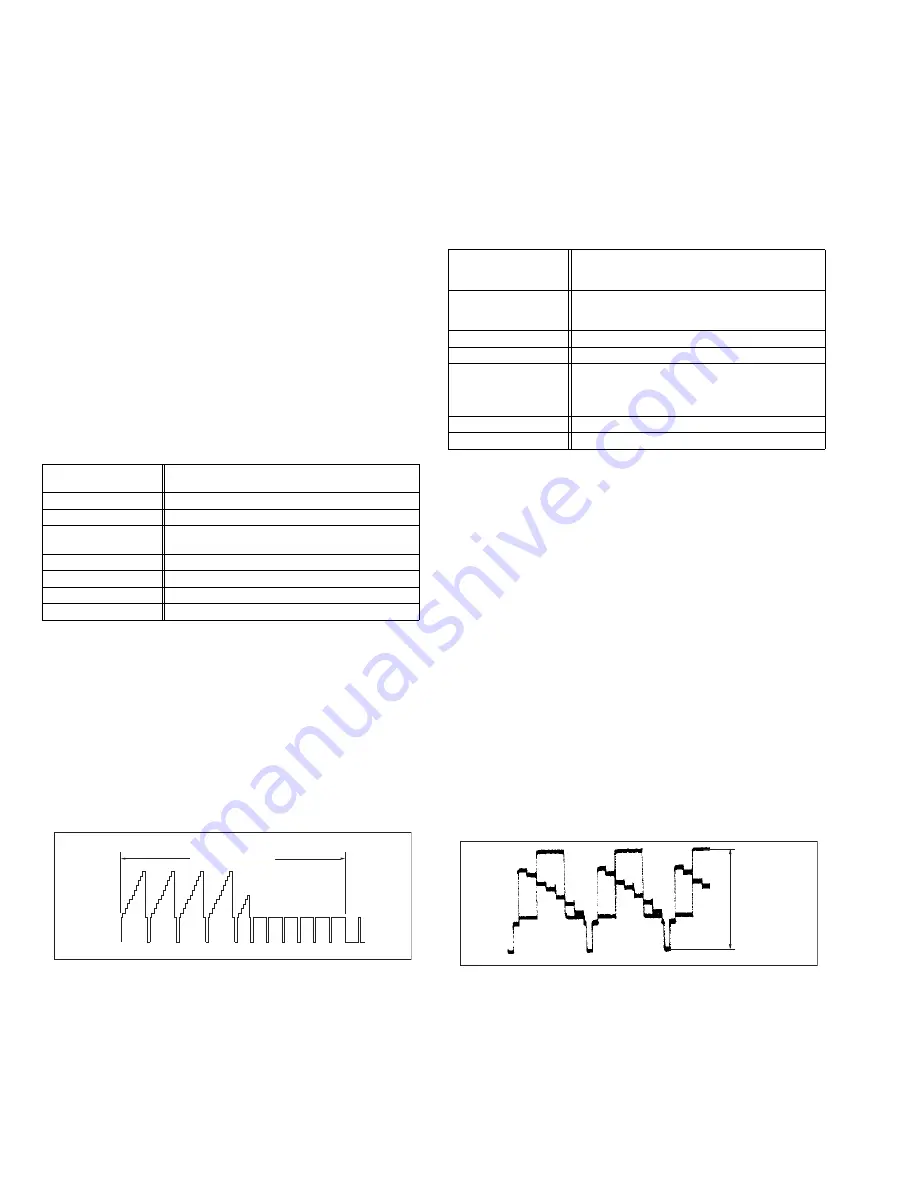
1-4 (No.YD045)
SECTION 4
ADJUSTMENT
Please refer to "DR-MV1SUS No.YD006" about this section except a written item.
4.1 Electrical adjustment (VHS SECTION)
Note:
The following adjustment procedures are not only necessary
after replacement of consumable mechanical parts or board
assemblies, but are also provided as references to be referred
to when servicing the electrical circuitry.
In case of trouble with the electrical circuitry, always begin a
service by identifying the defective points by using the measur-
ing instruments as described in the following electrical adjust-
ment procedures. After this, proceed to the repair,
replacement and/or adjustment. If the required measuring in-
struments are not available in the field, do not change the ad-
justment parts (variable resistor, etc.) carelessly.
4.1.1 Servo circuit
4.1.1.1
Switching point
(1) Play back the signal (A1) of the alignment tape (A2).
(2) Apply the external trigger signal to D.FF (E) to observe the
VIDEO OUT waveform and V.PB FM waveform at the
measuring points (D1) and (D2).
(3) Set the VCR to the manual tracking mode.
(4) Adjust tracking so that the V.PB FM waveform becomes
maximum.
(5) Transmit the code (F) from the Jig RCU to adjust so that the
trigger point of the VIDEO OUT wavefome is changed from
the trailing edge of the V.sync signal becomes the specified
value (G).
(6) Set the VCR to the stop mode.
Fig.4-1a Switching point
4.1.2 Video circuit
4.1.2.1
EE Y/PB Y level
(1) Input the signal (A3) from the input point (A1).
(2) Set the VCR to the mode (B1).
(3) Observe the Y OUT waveform at the measuring point (D).
(4) Set the VCR to the EVR mode by transmitting the code (F1)
from the Jig RCU.
(5) Set the EVR address to (F2) by transmitting the code (F3)
from the Jig RCU.
(6) Transmit the code (F4) from the Jig RCU to adjust so that
the Y level of the Y OUT waveform becomes the specified
value (G).
(7) Release the EVR mode of the VCR by transmitting the
code (F1) from the Jig RCU again. (When the EVR mode
is released, the adjusted data is memorized.)
(8) Input the signal (A3) from the input point (A2).
(9) Repeat steps (3) to (7) in the mode (B1).
(10) Record the signal (A3) in the mode (B2), and play back the
recorded signal.
(11) Set the VCR to the manual tracking mode.
(12) Repeat steps (3) to (7) in the mode (B2).
(13) Record the signal (A3) in the mode (B3), and play back the
recorded signal.
(14) Set the VCR to the manual tracking mode.
(15) Repeat steps (3) to (7) in the mode (B3).
Fig.4-1b EE Y/PB Y lebel
Signal
(A1)
(A2)
• Stairstep signal
• Alignment tape(EP,stairstep,NTSC) [MHP-L]
Mode
(B)
• PB
Equipment
(C) • Oscilloscope
Measuring point (D) • VIDEO OUT terminal (75
Ω
terminated)
• TP106 (PB. FM)
External trigger (E)
• TP111 (D.FF)
Adjustment part (F)
• Jig RCU: Code “43-51”or “43-52”
Specified value (G) • 8.0 ± 0.5H
Adjustment tool (H) • Jig RCU [PTU94023B]
V.sync
Trigger point
Switching point
V. rate
Signal
(A1)
(A2)
(A3)
• Ext. S-input
• Ext. input
• Color (colour) bar signal [NTSC]
Mode
(B1)
(B2)
(B3)
• EE SP
• S-VHS SP
• VHS SP
Equipment
(C) • Oscilloscope
Measuring point (D) • Y OUT terminal (75
Ω
terminated)
EVR mode
EVR address
(F1)
(F2)
(F3)
(F4)
• Jig code “43-57”
• A : 11
• Jig code “43-21” twice
• Jig code “43-18” or “43-19” (C/-)
Specified value (G) • 1.00 ± 0.05 Vp-p
Adjustment tool (H) • Jig RCU [PTU94023B]
H. rate
Y level



















